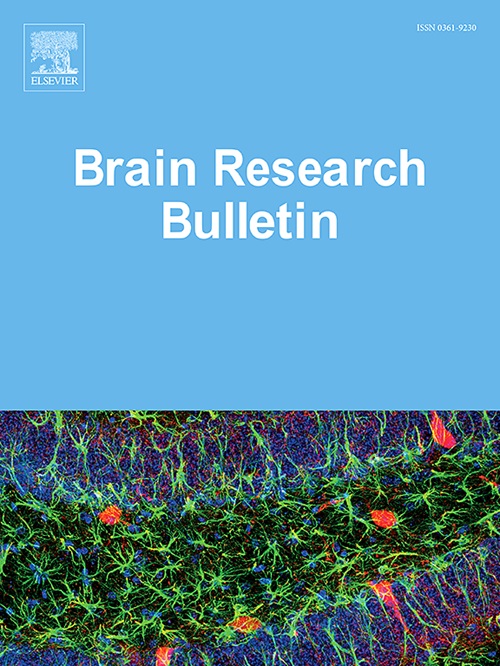Articulation-function-associated brain developmental changes in cleft lip and palate patients
IF 3.5
3区 医学
Q2 NEUROSCIENCES
引用次数: 0
Abstract
Background
Cleft palate articulation disorder is the most common dysfunction in individuals with cleft lip and palate (CLP), significantly affecting communication and quality of life. Despite previous studies having examined structural and functional brain changes in CLP, age-related functional changes related to articulation disorders remain unclear.
Objective
The purpose of this research was to investigate brain functional differences across age groups of CLP patients and correlations with articulation performance.
Method
A total of 127 participants were included: 25 CLP children, 34 healthy children, 44 CLP adults, and 24 healthy adults. Resting-state functional magnetic resonance imaging (fMRI) was used to assess brain activity. Voxel-based analysis, functional connectivity, and network topological properties were assessed, along with mediation analysis to explore relationships between age, brain function, and articulation performance.
Results
CLP adults and children showed significant differences in resting-state brain function, particularly in the cerebellar vermis, crus, right parietal lobe, temporal lobe, and right central region—key areas for semantic processing and motor control. CLP adults exhibited greater connectivity between the postcentral gyrus and cerebellar vermis and enhanced small-world properties. Mediation analysis indicated that regional homogeneity in the left medial superior frontal cortex fully mediated the relationship between articulation performance and age.
Conclusion
CLP patients with articulation disorders exhibited altered brain functional synchronization as compared to controls, with adults showing further network development. Differences between children and adults highlight variations in treatment focus and stability, and this highlights the necessity of age-specific rehabilitation protocols.
唇腭裂患者与关节功能相关的大脑发育变化。
背景:腭裂发音障碍是唇腭裂患者最常见的功能障碍,严重影响沟通和生活质量。尽管先前的研究已经检查了CLP的结构和功能大脑变化,但与关节障碍相关的年龄相关的功能变化仍不清楚。目的:本研究的目的是探讨CLP患者脑功能的不同年龄组差异及其与发音表现的相关性。方法:共纳入127名参与者:25名CLP儿童,34名健康儿童,44名CLP成人,24名健康成人。静息状态功能磁共振成像(fMRI)评估脑活动。评估了基于体素的分析、功能连通性和网络拓扑特性,并进行了中介分析,以探索年龄、脑功能和发音表现之间的关系。结果:CLP成人和儿童在静息状态脑功能上存在显著差异,特别是在小脑蚓部、小腿、右顶叶、颞叶和右中央区域-语义加工和运动控制的关键区域。CLP成人表现出更强的中枢后回和小脑蚓部之间的连通性和增强的小世界特性。中介分析表明,左侧内侧额叶上皮层的区域均匀性完全介导了发音能力与年龄的关系。结论:与对照组相比,伴有关节障碍的CLP患者表现出脑功能同步改变,成人表现出进一步的网络发育。儿童和成人之间的差异突出了治疗重点和稳定性的差异,这突出了针对年龄的康复方案的必要性。
本文章由计算机程序翻译,如有差异,请以英文原文为准。
求助全文
约1分钟内获得全文
求助全文
来源期刊

Brain Research Bulletin
医学-神经科学
CiteScore
6.90
自引率
2.60%
发文量
253
审稿时长
67 days
期刊介绍:
The Brain Research Bulletin (BRB) aims to publish novel work that advances our knowledge of molecular and cellular mechanisms that underlie neural network properties associated with behavior, cognition and other brain functions during neurodevelopment and in the adult. Although clinical research is out of the Journal''s scope, the BRB also aims to publish translation research that provides insight into biological mechanisms and processes associated with neurodegeneration mechanisms, neurological diseases and neuropsychiatric disorders. The Journal is especially interested in research using novel methodologies, such as optogenetics, multielectrode array recordings and life imaging in wild-type and genetically-modified animal models, with the goal to advance our understanding of how neurons, glia and networks function in vivo.
 求助内容:
求助内容: 应助结果提醒方式:
应助结果提醒方式:


